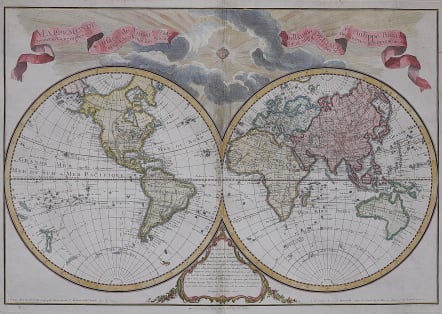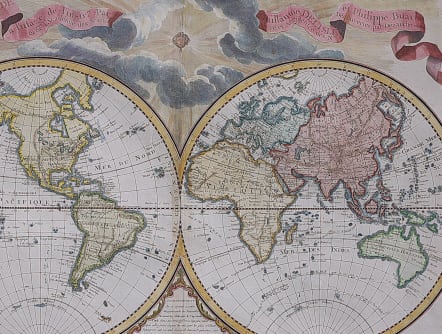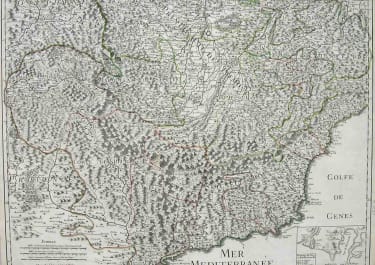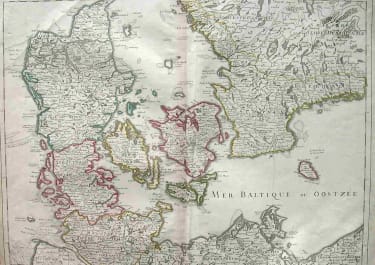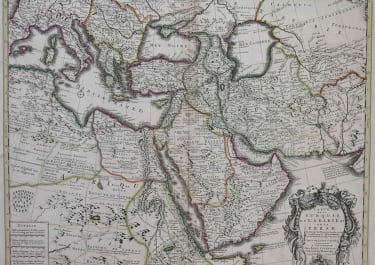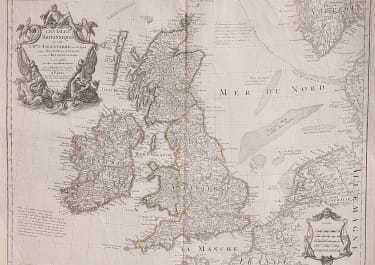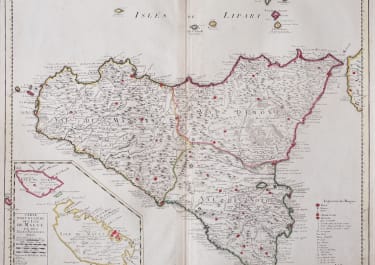MAPPEMONDE PREMIERS GEOGRAPHES A L'USAGE DE L'INSTRU.ON PAR ET DEL'ACADAMIE DES SCIENCES
£795
Very attractive large Hemisphere World map. Withnexcellent hand colour on good heavy paoer.
Dezauche, the successor to the Delisle cartographic firm, issued this impressive large double hemisphere map based upon the work of both Delisle and Bauche. The map shows well formed continents with the latest discoveries described in the cartouche at bottom. The western portion of North America is still largely blank but Alaska is shown in a rudimentary shape based on the discoveries of Captain Cook. Austalia and New Zealand also reflect the discoveries of Captain Cook, whose routes are traced throughout the map, including several landfalls in Antarctica. The large title is in ribbon form, with a sun and clouds covering the upper portion of the map, and a decorative advertisement cartouche at bottom with the date from the French Republican calendar, An 9 1798
Excellenty Condition Mint
Very good condition.
code : M3522
Cartographer : DE L'ISLE Family
Date : 1798 Paris
Size : 47*67 cms
availability : Available
Price : £795
Claude de l'Isle (1644-1720) was a geographer and historian working in Paris, but was overshadowed by his more famous son, Guillaume (1675-1726), who is probably the greatest figure in French cartography. Having learnt geography from his father, it is said that at the age of eight or nine he could draw maps to demonstrate ancient history. He studied mathematics and astronomy under J.D Cassini, where he received the grounding in scientific cartography, that is the hallmark of his work.
His first atlas was published in about 1700, in 1702 he was elected a member of the Academie Royale des Sciences, and in 1718 he became 'Premier Geographe du Roi'. His maps of the newly explored parts of the world reflect the most up-to-date information available and did not contain fanciful detail in the absence of solid information.
His work was important as marking a transition from the maps of the Dutch school, which were highly decorative and artistically-orientated, to a more scientific approach.
De L'Isle also played a prominent part in the recalculation of latitude and longitude, based on the most up-to-date celestial observations. His major contribution was in collating and incorporating this latitudinal and longitudinal information in his maps, setting a new standard of accuracy, quickly followed by many of his contemporaries. Guillaume De L'Isle's reputation was such that pirated versions appeared in many countries, most particularly by Chatelain and Covens and Mortier.
After his death in 1726 the business was continued by his nephew Philippe Buache, and subsequently by J. Dezauche.

